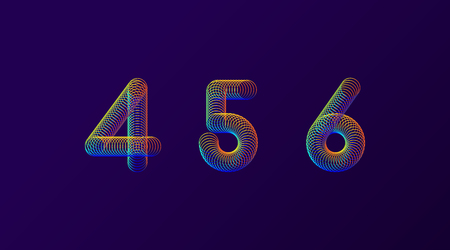Setting the Scene: The East Meets the Isles
As the tides of history shifted in the 17th century, Britain found itself swept up in a new current of curiosity—one that looked eastwards, towards lands steeped in ancient wisdom and unfamiliar philosophies. It was an era marked by exploration, global trade, and the slow but steady dissemination of ideas across continents. Among the treasures brought to British shores were not only silks and spices but also manuscripts and concepts that would intrigue and challenge the Western mind. Central among these was the I Ching, or Book of Changes—a Chinese classic whose enigmatic hexagrams and philosophical depth would come to captivate British intellectuals hungry for fresh perspectives on fate, order, and the nature of change itself.
The British fascination with Eastern thought did not spring forth fully formed; rather, it germinated gradually as traders, missionaries, and scholars began relaying tales of distant empires where logic danced with mysticism. For thinkers in London’s burgeoning coffeehouses and Oxford’s candlelit halls, the arrival of texts like the I Ching represented both a scholarly challenge and a cultural invitation. Here was a system that defied linear reasoning, inviting instead a contemplative engagement with ambiguity—a stark contrast to Enlightenment rationality. Yet, it was precisely this otherness that proved so alluring. As translations trickled into Britain from Jesuit intermediaries and Sinophile savants, early adopters set about deciphering its cryptic symbology, eager to understand what lessons this ancient oracle might hold for a nation poised on the cusp of modernity.
2. Victorian Curiosity: The I Ching’s Arrival in British Academic Circles
The Victorian era was a period marked by insatiable curiosity and an appetite for knowledge that knew few boundaries. As the British Empire expanded its reach across continents, so too did the intellectual horizons of its scholars. Among the many treasures and texts brought back from the East, the I Ching—or Book of Changes—captured the imagination of British academics, fitting perfectly with the era’s fascination for Oriental wisdom and esoteric knowledge.
This openness to global ideas was not mere happenstance. The Victorians prided themselves on their scientific rigour and their ability to catalogue and interrogate everything from botany to philosophy. When translations of the I Ching began circulating within academic circles, they were met with both scholarly scepticism and genuine intrigue. The following table highlights some key milestones in this cross-cultural exchange:
| Year | Event | Significance |
|---|---|---|
| 1830s | Early mentions in missionary reports | Sparked initial curiosity about Chinese classics |
| 1876 | James Legge’s translation published | Made the text accessible to a wider British audience |
| 1890s | I Ching discussed at Royal Asiatic Society meetings | Brought scholarly legitimacy to its study |
The Victorian context also influenced how the I Ching was interpreted. While some saw it as a mystical oddity, others regarded it as evidence of a sophisticated philosophical system, resonating with contemporary interests in comparative religion and emerging fields such as anthropology. This dual approach—part curiosity cabinet, part serious scholarship—laid the groundwork for later British thinkers to engage more deeply with Eastern thought.
Ultimately, it was the Victorian spirit of exploration—intellectual as much as geographical—that made possible the arrival and initial interpretation of the I Ching in Britain. This set a precedent: far from being dismissed as exotic or irrelevant, Chinese classics became part of ongoing debates about meaning, fate, and human understanding in British academic life.

3. Influence on British Literary Greats
The legacy of the I Ching in Britain is perhaps most vividly realised through its subtle but significant impact on the nation’s literary giants.
T.S. Eliot: Seeking Order in Chaos
T.S. Eliot, one of the leading voices of modernist poetry, was notably drawn to philosophies that explored the interplay between fate and free will. While his engagement with Eastern texts was eclectic, Eliot’s allusions to cyclical time and shifting realities in works like “The Waste Land” echo the I Ching’s central motif of perpetual change and transformation. For Eliot, who lived through two world wars, the ancient Chinese classic offered a lens to view life as a series of transitions—each imbued with uncertainty yet guided by underlying patterns.
W.B. Yeats: The Poet as Mystic Interpreter
If Eliot was an architect of uncertainty, W.B. Yeats embraced the I Ching as a mystic tool for understanding destiny and symbolism. Yeats’s fascination with divination and spiritual systems led him directly to the I Ching, which he studied deeply alongside his wife, Georgie Hyde-Lees. The symbolism of hexagrams appears in his later poetry and prose, especially in “A Vision,” where he explores cycles of history and personal fate through diagrams reminiscent of the I Ching’s structure. For Yeats, the text was more than philosophical—it was a living oracle shaping both creativity and self-reflection.
Symbolic Resonance Across Literary Circles
The resonance of I Ching extended beyond these two luminaries into broader literary circles, influencing writers associated with Bloomsbury and post-war experimentalism. Its language of opposites—yin and yang—offered fertile ground for exploring dualities: tradition versus innovation, rationality versus intuition. British authors found in the I Ching not just exoticism but a practical framework for grappling with modern life’s ambiguities.
Cultural Crossroads: Blending East and West
This cross-pollination between British letters and ancient Chinese wisdom illustrates how cultural exchange can invigorate artistic expression. By tracing these threads through Eliot and Yeats, we witness how the I Ching became a bridge—not only connecting distant intellectual traditions but also challenging writers to reimagine their own worlds through new metaphors of chance, order, and transformation.
4. The I Ching’s Role in Modern British Thought
During the tumultuous waves of the 20th century, the I Ching found a new resonance within British intellectual and artistic circles. Its influence was notably felt among philosophers, avant-garde artists, and the burgeoning counterculture movements, all of whom sought alternative frameworks for understanding fate, uncertainty, and the creative process. The I Ching, with its roots in ancient Chinese wisdom, became an unexpected but rich source of inspiration for those challenging the rigidity of Western rationalism.
British Philosophers: Embracing Uncertainty
Philosophers such as Alan Watts—though British-born but later associated with American counterculture—championed the I Ching as a means to grapple with uncertainty and the unpredictability of life. By integrating Eastern philosophies into their discourse, these thinkers questioned linear cause-and-effect models prevalent in Western thought. The I Ching encouraged acceptance of ambiguity and change, aligning with existentialist currents then sweeping through British academia.
Artists and Creativity: Chance as Muse
The allure of chance operations found fertile ground among British artists, particularly those associated with movements like Dadaism and Surrealism. For instance, artist and musician Brian Eno famously used I Ching-inspired processes to generate randomness in his creative work. By consulting its hexagrams, artists introduced serendipity into their practice—a deliberate resistance to premeditated structure that mirrored broader cultural pushes towards liberation and experimentation.
Table: Notable 20th Century British Figures Influenced by the I Ching
| Name | Field | Nature of Influence |
|---|---|---|
| Alan Watts | Philosophy | Popularised Eastern philosophy; advocated embracing uncertainty via I Ching principles. |
| Brian Eno | Music/Art | Used chance-based methods inspired by I Ching to break creative deadlocks. |
| Kathleen Raine | Poetry/Criticism | Drew on I Ching symbolism to explore fate and nature in verse. |
| The Beatles (George Harrison) | Music | Cited I Ching during the band’s psychedelic period as influencing lyrical themes. |
The Counterculture Movement: Reimagining Fate and Agency
The post-war counterculture in Britain eagerly adopted alternative spiritualities. The I Ching offered a non-dogmatic approach to fate—one that emphasised personal interpretation over predestination. This approach resonated with youth movements questioning social norms and seeking more fluid identities. In coffee houses from Soho to Manchester, discussions about “casting the coins” or “consulting the book” became part of a wider dialogue on agency, destiny, and freedom.
Reflections on Intercultural Dialogue
The cross-pollination between East Asian texts and British intellectual life is more than historical curiosity; it represents a living dialogue on how societies reinterpret ancient wisdoms to address contemporary anxieties. The role of the I Ching in shaping British thought underscores a willingness to look beyond borders—geographic and conceptual—for tools that nurture creativity, resilience, and open-mindedness in uncertain times.
5. Contrasts and Convergences: British Rationalism and I Ching’s Mystique
The intellectual landscape of Britain has long been characterised by a rationalist tradition, where logic, empiricism, and clarity of thought are held in high esteem. From the Enlightenment onwards, figures like John Locke and David Hume set the tone for philosophical inquiry that privileges reason over mysticism. In this context, the arrival of the I Ching—with its cryptic hexagrams and poetic guidance—posed both a challenge and an invitation to British thinkers seeking to broaden their epistemological horizons.
Rationalist Skepticism Meets Eastern Mysticism
British rationalists often approached the I Ching with a degree of scepticism, questioning its interpretive elasticity and resistance to empirical validation. The unpredictability inherent in casting coins or yarrow stalks seemed, at first glance, to contradict the scientific method so prized in British academic circles. Yet, some were intrigued by its enduring appeal and capacity to stimulate intuitive thinking—a quality not entirely alien to traditions such as Romanticism or the later emergence of depth psychology.
Points of Intersection: Dialogue Rather Than Dissonance
Despite initial contrasts, certain British thinkers found ways to reconcile these divergent modes of understanding. Figures like Carl Jung—though Swiss himself, profoundly influential in British intellectual circles—highlighted the I Ching’s value as a tool for exploring synchronicity and the unconscious. Similarly, British poets and writers in the early twentieth century began experimenting with the I Ching as a means of breaking free from rigid structures, inviting ambiguity and creative uncertainty into their work. This convergence fostered a dialogue between analytical reasoning and interpretive openness.
The Enduring Tension and Creative Synthesis
The interplay between British rationalism and the mystique of the I Ching has never been fully resolved. Rather than erasing one another, these traditions often exist in productive tension—each tempering the excesses of the other. For some contemporary British thinkers, engaging with the I Ching offers a way to embrace complexity without abandoning rigour; it becomes possible to hold both doubt and wonder in creative suspension. Thus, what began as a clash has gradually evolved into a nuanced synthesis that continues to shape interdisciplinary thought across Britain today.
6. Reflections: Enduring Legacies and the Contemporary British Context
The modern legacy of the I Ching in Britain is, in many ways, a testament to the nation’s openness to cross-cultural dialogue and intellectual curiosity. Despite its ancient Chinese origins, the I Ching has found a unique resonance within British society, shaping both academic discourse and popular imagination.
Continued Scholarly Engagement
Among contemporary British scholars, the I Ching remains a source of ongoing debate and analysis. Universities across the UK have incorporated its study into courses on philosophy, comparative religion, and literature, reflecting an enduring fascination with its method of divination and philosophical insights. The text’s ambiguity—its refusal to yield simple answers—mirrors a British intellectual tradition that values scepticism and nuanced thinking. It is not uncommon to see debates unfold at conferences from Oxford to Edinburgh about the I Ching’s place in global intellectual history.
Cultural Currents in Everyday Life
Beyond academia, the I Ching continues to inspire both laypeople and artists. Its influence surfaces in everything from poetry readings in London cafés to mindfulness workshops in Yorkshire. Some Britons turn to the I Ching as a meditative tool or for personal guidance, attracted by its invitation to reflect rather than prescribe—a quality that aligns well with British preferences for understatement and introspection. Moreover, references to the I Ching occasionally appear in mainstream media, literature, and even political commentary, often used as shorthand for embracing uncertainty or seeking wisdom beyond conventional boundaries.
A Living Dialogue Between Traditions
This ongoing engagement speaks to a broader pattern of cultural hybridity that has long characterised British intellectual life. The I Ching’s presence in Britain today is not merely a relic of past curiosity; it is woven into current debates about identity, meaning, and how societies can draw from diverse traditions without succumbing to superficial exoticism. In this sense, the text acts as both mirror and window: reflecting persistent British questions about fate, agency, and change while opening new perspectives on what it means to think across cultures.
The Future of Cross-Cultural Curiosity
As Britain continues to navigate its complex role on the world stage—balancing tradition with innovation—the I Ching endures as a symbol of possibility. Its legacy challenges both scholars and the public to approach difference with humility and creativity. Whether through academic inquiry or everyday contemplation, the intersections between British thought and this ancient Chinese classic remain fertile ground for discovery. In doing so, they ensure that the conversation between East and West is not only remembered but actively renewed.


